Impact tests can be very expensive, with the test piece commonly being destroyed during the impact. To minimise costs, engineers need to have a good idea of the outcome before an impact test take place. In recent years the key to cost reduction has been to carry out a range of computer simulated impact tests, before carrying out a live test on the most promising design.
Computer predictions are only as good as the data fed into the computer model. SALi poses particularly difficult simulation problems because it’s a system of interacting materials. There are almost too many choices of capsules, matrix fluids and packaging designs. A more serious challenge is that the energy absorbing characteristics of the SALi material change rapidly, and in a complex manner, as the viscous fluid swirls round the shrinking capsules.
A third problem is that the “text book” techniques used for measuring the core characteristic properties of solid and foam based impact absorbers cannot be applied to SALi because of its novel, visco-elastic fluid nature. The limited number of SALi characteristics that have been published to date cannot be used in computer simulations because they fail to reflect SALi’s complexity.[11, 14]. Techniques for producing valid SALi characteristics are discussed on our SALi Core Characteristics web page.
Other early investigations in Britain failed because they used inappropriate materials, such as elastic packaging and corrosive fluids which damaged the packaging.[12, 13] Consequently, in spite of £300,000 research funding by the British Government, commercial interest declined after 2003. [We will explain why these "careless" mistakes were made in the next section.]
More recent work in China[5] and Britain[4] has been far more successful. For example, after completing their study of a SALi based vibration isolator, researchers at Nanjing University concluded that it, “offers outstanding performance and a good prospect in engineering practice.” [5]
Some milestones in the “development” of SALi Technology
This section is a cautionary tale for fellow inventors
Bill Courtney regularly receives letters from optimistic inventors who are prepared to take huge financial risks because they believe in their inventions. He also receives distressing letters from inventors whose family relationships were destroyed when the money ran out.
If you are thinking of taking a gamble on your great idea, please read this section before you splash out your cash. – It could save your marriage or other family ties.
Bill was lucky; his partner Jill stood by him during the long difficult years. But you may not be so fortunate.
July1986
In 1986 Bill Courtney decided to celebrate his fortieth birthday by riding one of the recently invented mountain bikes from Lands End to John O’Groats. The bulk of the journey was off-road. His cycling mitts offered limited protection against the vibrations caused by riding over rough ground and he suffered several injuries because he was not wearing a helmet any protective clothing. – In those days, there was very little protective cycling gear on the market.
While recovering from cracked ribs and other minor injuries back home, his mind turned to the problem of developing lightweight protective gear for off-road cycling and other sports. He invented SALi, a composite material + packaging that combined the strengths of the two types of cycling mitt that he used during his ride.
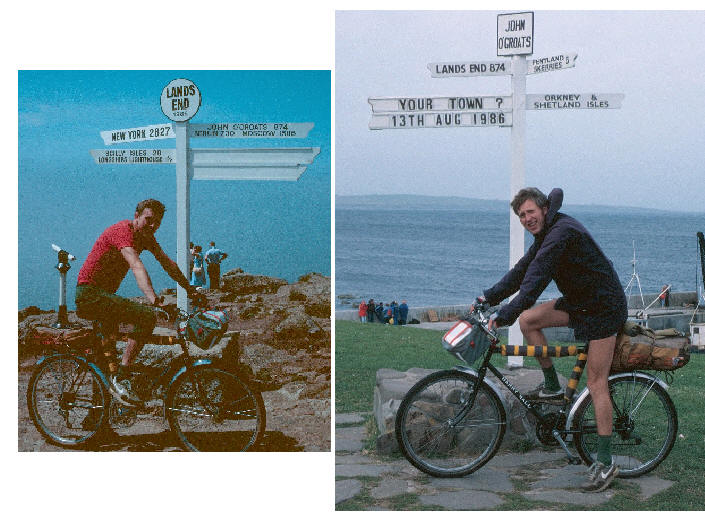
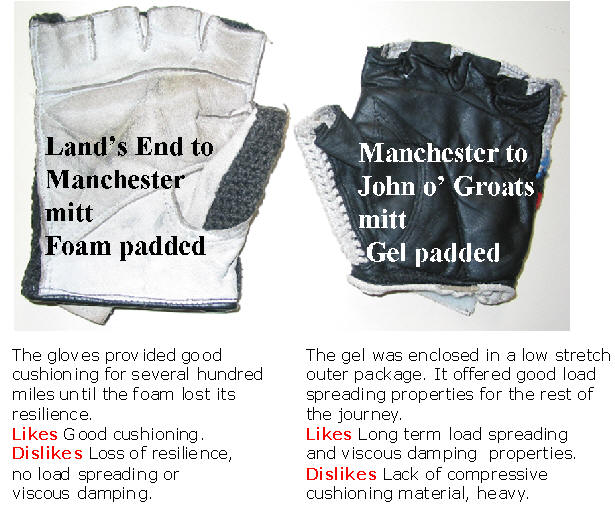
Figure 18. The limitations of Bill's primitive off-road cycling kit inspired him to invent SALi Technology.
He also drew inspiration from nature, ranging from the cellular nature of Giant Redwood Tree bark to the fluid that protects the human brain inside the skull.
September 1986
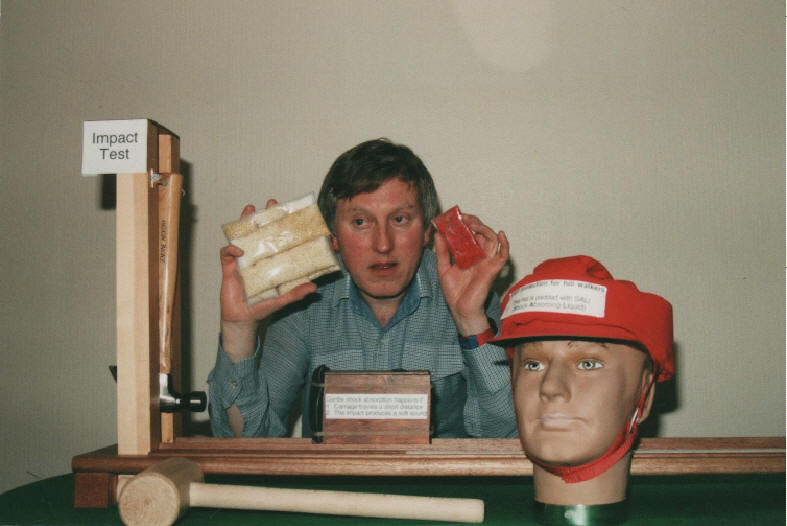
Figure 19. This photograph shows the test rig that Bill built in 1986 to test different formulations of SALi. (As labelled for BBC and Sky television programmes a decade later.)
A range of SALi formulations were investigated. The most important finding was that the correct packaging is vital. Elastic packages such as rubber balloons, plastic bags and condoms are inadequate, but low stretch packages made from Ventile cotton or Cordura nylon are effective. (See Figure 3 above.)
Ironically, the theme of the BBC program, (“The Money Programme”, 27 October 1996) was “Why can’t we exploit our British inventive talent?” The short history of SALi Technology on this web page shows that twenty nine years after SALi was invented, we still don’t (want to) know the answer.
In those 1986 paper based information days, Manchester Central Library had an excellent collection of patent literature. From 1986 to 1996 Bill spent many of his Saturdays studying the patent documents. He concluded that the SALi concept was novel. He also realised that it has a massive life saving potential. So he lived frugally for ten years, building up funds to enable him to exploit his invention.
His companion Jill was tolerant and supportive.
Thank you Jill
XX
SALi was seen as a cash cow for financing the development of another invention
The SALi concept was far less controversial than the argument that Courtney had been making since the 1960’s that it should be possible to build a power generator that could run on heat extracted from the atmosphere.
So in order to provide the finance and the status for taking his power generator ideas forward he decided to give priority to developing SALi as a cash cow.
1987 Bill buys a sewing machine, learns to sew and develops a number of prototype SALi products. He also investigates different types of fabric containment bags. Low stretch polycotton is excellent, but stretchy Lycra is ineffective.
Below, some early SALi concept designs from the 1980's.
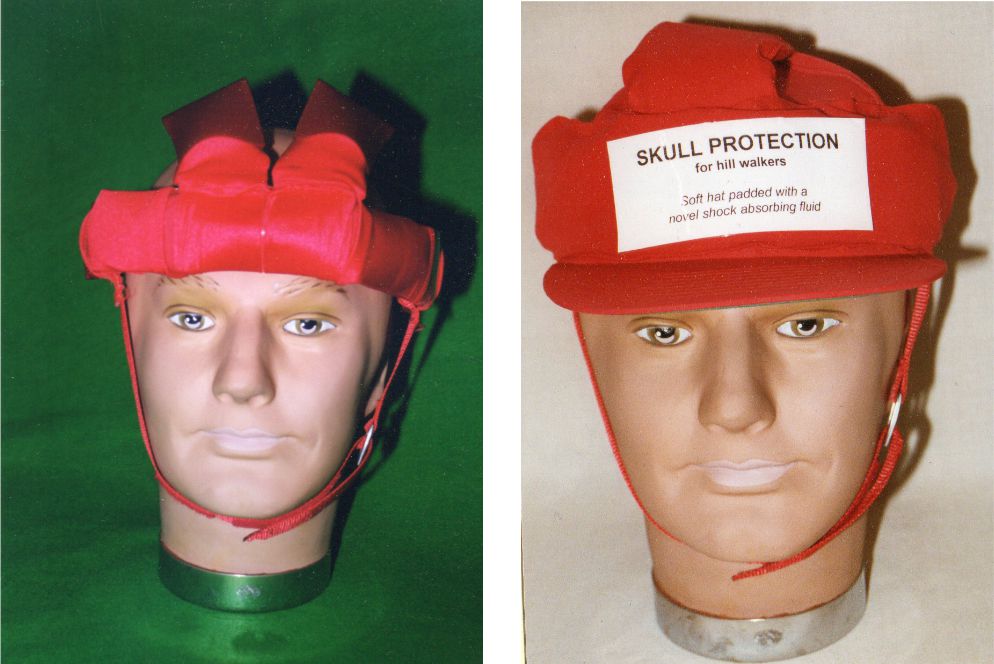
Figure 20. Soft protective headwear for boxing, other contact sports, visually impaired people and others at excessive risk of injury when wild country walking.

Figure 21. A wide range of mittens and gloves was envisaged for both humans and robot "hands."
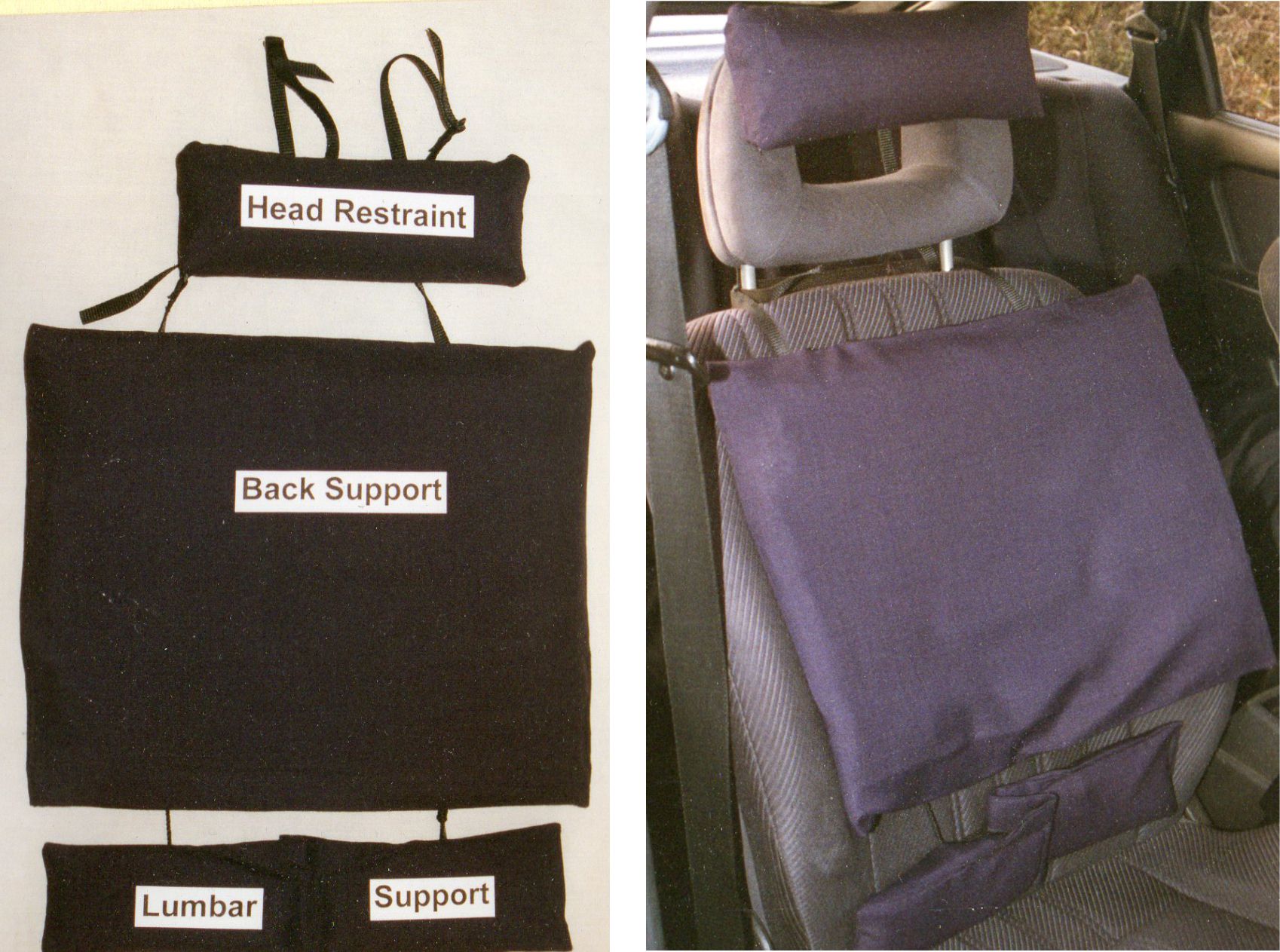
Figure 22. Passive impact protection for vehicle interiors could vary from improved head restraints to baby carriers and cushioning for roof support pillars.
1993
Bill Courtney’s original business plan was to use SALi as a cash cow invention to fund his green energy inventions.
He filed his first green energy patent application on March 11th 1993.
1996
This was the best and worst of times.
The best
After 10 years of secrecy a patent was filed. Then following a Patent Office investigation, a patent was granted [6]. The SALi products developed during the 1980's went on display at an international inventions fair and received a good reception.
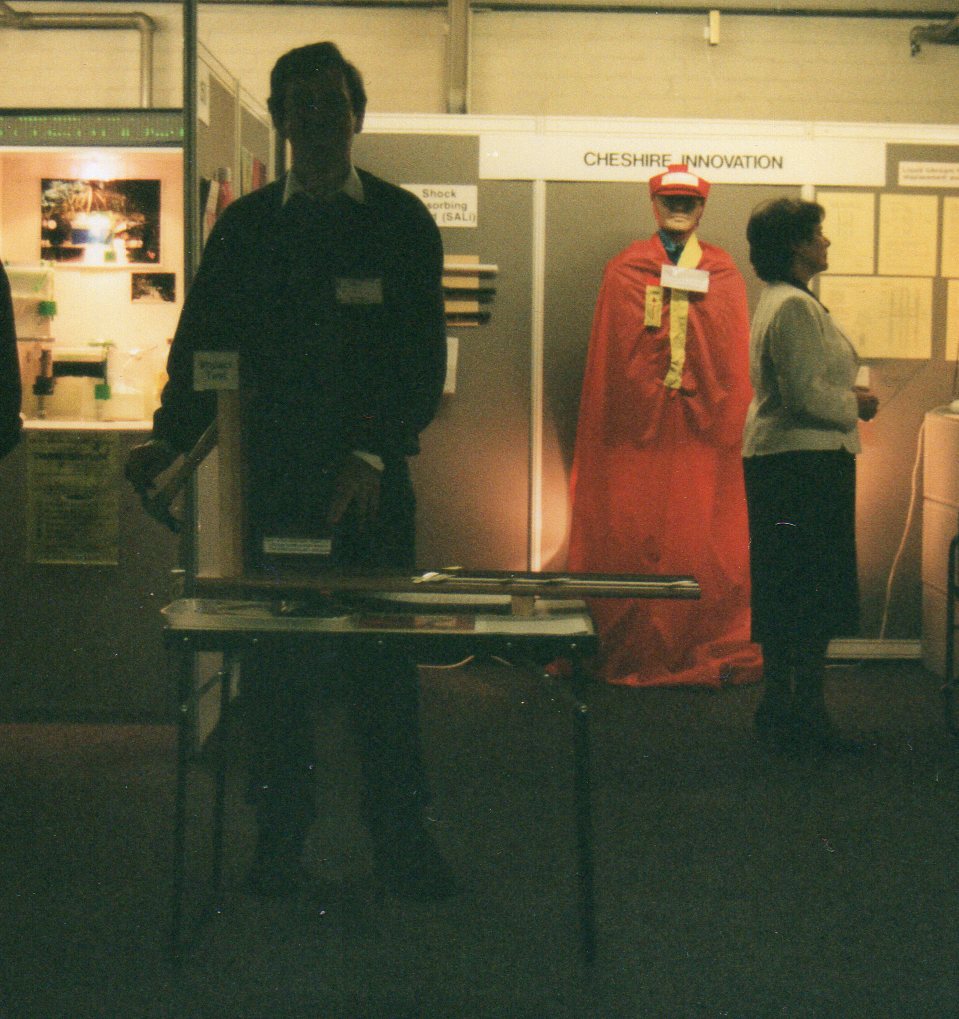
Figure 23. This is the only surviving photograph of SALi's launch day. The rest were thrown out during a "tidy-up" at Manchester University.
The worst
Bill sought advice from Manchester Business Link and was introduced to Dr Wilson a mathematician at Manchester University. Dr Wilson was researching gaseous volcanic lavas that are mathematically similar to SALi.
As result, Bill Courtney enrolled as a mature engineering student at the University. He hoped to publish research papers on SALi and gain a PhD to enhance his academic credibility.
He was jointly supervised by an engineer, Dr Oyadiji and the mathematician, Dr Wilson.
Following media interest Dr Oyadiji became unhappy and started to stymie Bill’s work. He insisted on a test rig being built that Wilson and Courtney are very uneasy about.
The rig was so insensitive that massive impact forces had to be applied for any load sensor signal to be generated. As a consequence two expensive accelerometers were damaged.
Dr Wilson advised on an alternative rig design. This worked, but again Bill was stymied because he had to use a damaged accelerometer. This produced inexplicable signals that Wilson could not analyse, but which Oyadiji insisted were correct.
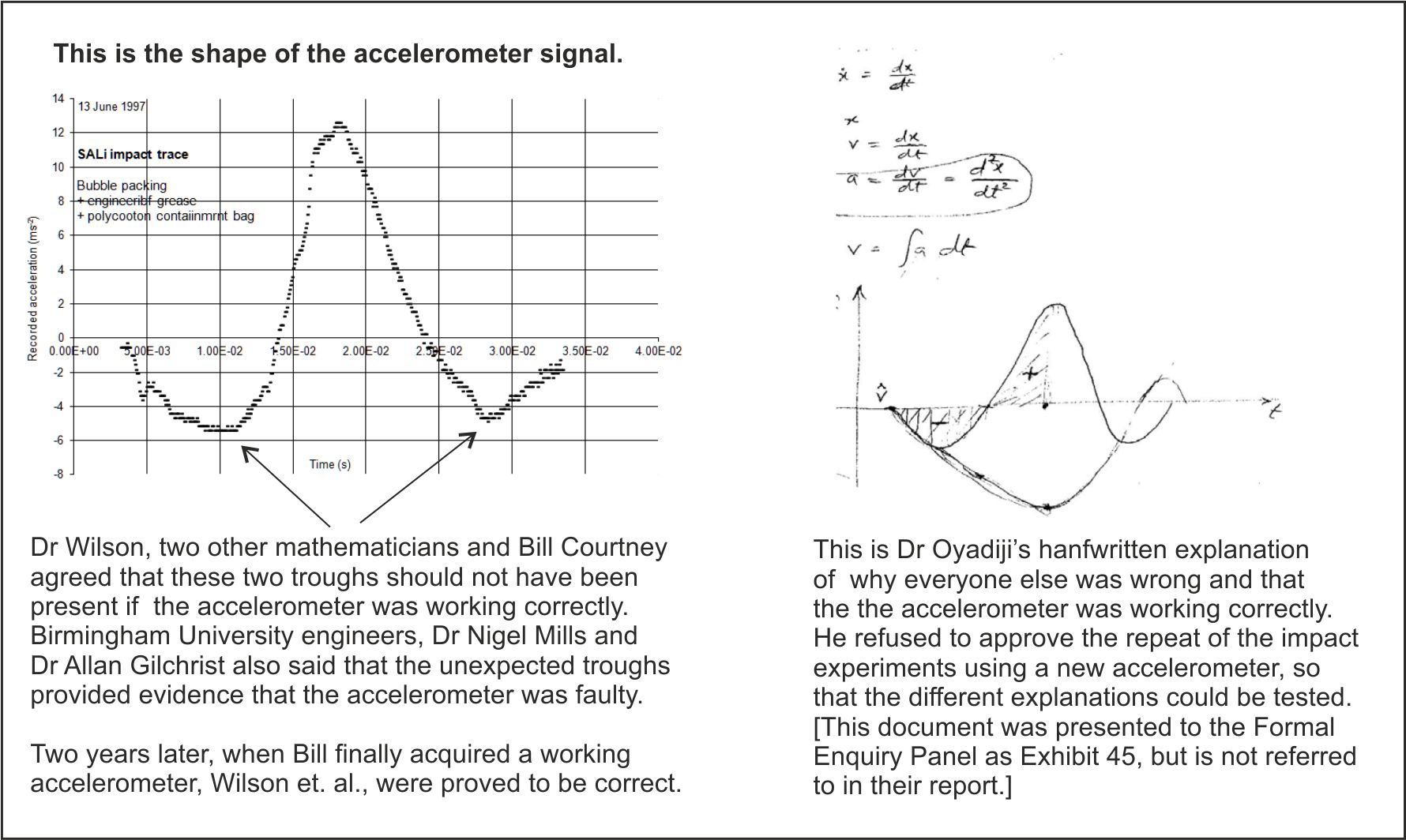
Figure 24. This display of hubris delayed the SALi research by another two years.
Dr Wilson abandoned his role in frustration. Bill tried to find an alternative second supervisor, but nobody was willing to take on the work.
After two years of painfully slow progress using damaged equipment Bill finally gained an MPhil and abandoned his PhD plans.
1997
A two page article in Eureka magazine describes Bill's proposals for using SALi in car bumpers. It attracts interest from the BBC, but annoys his supervisor.
It leads to a wide range of commercial proposals including protective motor cycle and horse riding clothing, rugby helmets for children, car interiors, crash barriers, engine mounts and protection for works of art in transit. Several company representatives visit Manchester University and offer to invest in the research. But when they realise the difficulties Courtney is facing, they lose interest.

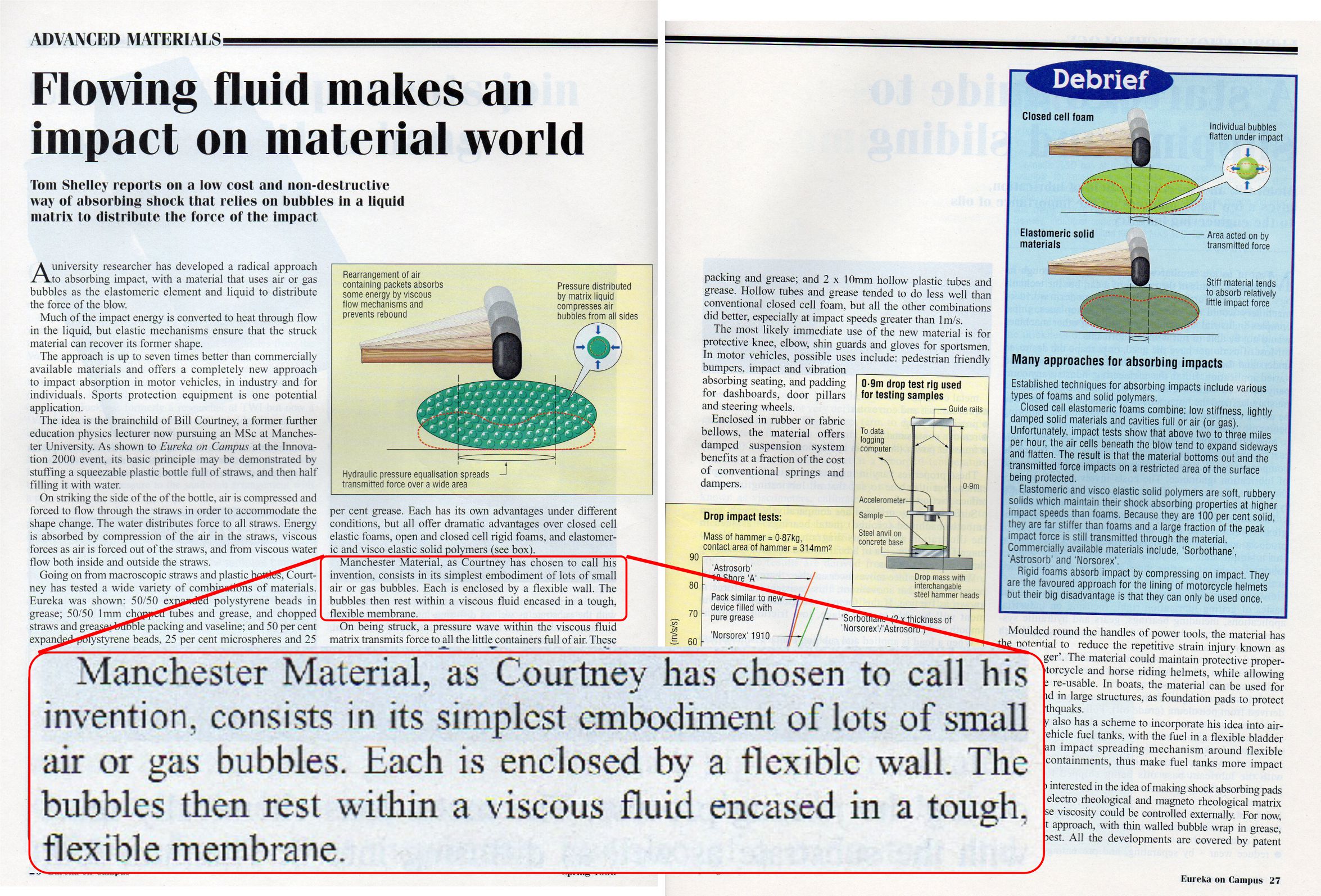
Figure 25. Bill changed the name of his invention to "Manchester Material" in an attempt to appease his Manchester University research supervisor. But it had the opposite effect, so he reverted to its original name, Shock Absorbing Liquid (SALi).
1998
22nd October, BBC Radio 4 broadcast a documentary programme, "Science in the Attic" exclusively featuring Bill Courtney as an inventor. As a result of the programme, Bill is invited to discuss SALi Technology with engineers at the Motor Industry Research Association (MIRA) laboratories in the Midlands.
Bill ignores instructions from his supervisor not to attend because MIRA "cannot be trusted with intellectual property." It was here that he learned that the “conflict of stiffness” problem was baffling engineers. [Engineers needed a car bumper that was both soft for pedestrian accidents and stiff for other types of collisions. ]
He managed to acquire a working accelerometer and applied to continue his University work a Research Fellow. But his supervisor, Dr Oyadiji, blocked approval. It takes Bill another four years to achieve Fellow status. (Fellowship awarded June 25th, 2002.)
Using results obtained with his new accelerometer, Bill wrote three research papers, referenced as 18, 19 and 20 below. They were never published because submission was blocked by his supervisor.
The blocking of papers 18 and 19 was particularly unethical because they provided the best evidence to date, that a correctly packaged, SALi filled car bumpercould solve the "conflict of stiffness problem." That is, create a "smart" car bumper that is soft for pedestrian lower leg impacts, but stiff for other bodywork damaging impacts.
Later, in 2003, the absence of this evidence allowed the European automobile manufacturers to persuade the EU to abandon its soft, pedestrian friendly bumper requirements. Since then, many thousands of European pedestrians have been killed or permanently crippled by accidents involving stiff car bumpers.
Seven years later, when a Formal Enquiry Panel at Manchester University delivered its report in 2010, it made no reference to Courtney's complaint about publication of his research being blocked.
1999
A Dow Chemicals (Auto Division) employee read about Bill’s SALi filled car bumper proposals in Auto express. He contacted Bill and a senior Dow executive flew over from America to meet Bill and his research supervisor. When the executive referred to the possibility of multi-million dollar royalties being earned, Dr Oyadiji became agitated.
Thanks to the intervention of MIL, the business arm of the University, the agitation is calmed and a legally binding collaboration agreement is signed between Dow, Manchester University and Cheshire Innovation (Bill’s trading name.)
The collaboration received EPSRC funding for the University and Foresight Vehicle funding for Bill. Dr Oyadiji’s line manager, Professor Wright was the joint applicant for the EPSRC funding, so there was some hope that with a professor in charge, the University work would run smoothly.
Unfortunately Professor Wright is a mild mannered man who finds it difficult to tackle Dr Oyadiji when problems emerge later.
As a result of the brooding hostility over royalties, there is an eighteen month delay before the project begins.
Following an international telephone interview, a Chinese research assistant is appointed. Courtney and Wright say that they cannot understand what the interviewee is saying, but Oyadiji claims he can. Dow and Bill only agree to his appointment because Oyadiji and Wright propose using PedSALi funding to pay for him to go on a crash technical English learning course.
Bill arranged a suitable English course at Fielden Park College, Manchester.
Patents written for Manchester University 1999 - 2001
Bill invented a wide range of variations of SALi Technology. At his own cost, he wrote six patent applications on behalf of MIL, the business arm of the University. He was primarily concerned with the humanitarian benefits of SALi and was happy at the prospect of Manchester University earning royalties from his creativity. He signed a legally binding royalty sharing agreement covering all of his SALi inventions.
In accordance with custom, his supervisor Dr Oyadiji was named as the second author. Bill hoped that this would appease his supervisor.
11 July 2001
Car makers start lobbying the EU claiming that a suitable soft bumper cannot be made.
September 11th 2001
The Chinese research assistant is met by Bill when he flies into Manchester Airport minutes before the skies are closed down by the terrorist attacks on America. He is a delightful person and clearly very intelligent. But his spoken English is poor.
The research assistant is instructed to build a 3 metre high drop rig. This is intended to allow a steel bar, representing a human lower leg, to fall on to a prototype car bumper at 11.1 m/s (40 km/h), to meet pending EU pedestrian safely requirements. Bill argues that Dr Oyadiji, the research supervisor has miscalculated the height. Dr Oyadiji disagrees and Professor Wright refuses to speak. The research assistant is unable to intervene because Dr Oyadiji has withheld his English language course funding and he is reluctant to speak in very poor English.
[If you have a basic knowledge of mechanics, you can verify that that a fall of h = 3.0 m cannot deliver an impact velocity, v = 11.1 m/s, by using the equation v2 = 2gh, where g= 9.8 m/s/s is the acceleration due to gravity.]
The rig was built and did not deliver the required velocity. "Mr" Courtney irritated Dr Oyadiji by stepping in and solving the problem, by converting the rig into a giant catapult. For proof of Bill's modification, see Section 2.5 on this linked web page.
Dr Oyadiji got his revenge three years later when Oyadiji et. al. publish a paper claiming that the catapult improvement is their invention. (You can see the plagiarism on this linked web page. You will need to scroll down about sixteen screens to see a diagram of the catapult.)
The later 2010 Formal Enquiry Report, written by Professor Helen Gleeson, Professor Peter Duck and Dr Pablo Fernandez will not make any reference to the plagiarism, but will reprimand "Mr Courtney" for "interfering" in the "Dr" and "Professor" led PedSALi research.
Dr Oyadiji goes on to instruct the research assistant to use an experimental design for the core characteristic work that ignores Newton's laws of motion and the laws of conservation of energy and conservation of momentum. Again, Bill objects. But the futile work went ahead because Professor Wright was reluctant to intervene in an argument between a "Dr" and a "Mr".
Again, the research assistant is unable to intervene because of his English language problems.
[This nonsensical core characteristic research was later published under written protest from Bill. Click to see an annotated copy of the misleading paper.]
In 2010, the Formal Enquiry Panel will refuse to examine this embarrassing evidence that Manchester University researchers have ignored the laws of physics.
2001, October onwards
The new SALi inventions that were the subject of Bill's patent applications donated to the University included anti-terrorist SALi applications.
A joint collaboration agreement with Cranfield Royal College of Military Science wasnegotiated by MIL, the business arm of Manchster University. Professor Horsfall from Cranfield flew to Washington to find out how we Brits could use SALi to help in the defence of the west.
On his return a meeting was arranged at Cranfield. Dr Oyadiji holds up the journey to Cranfield for two hours and the collaboration gets off to a bad start.
Both MIL and Bill are extremely frustrated by the blocking tactics used by Dr Oyadiji. The problem was he held the purse strings for the PedSALi project and in line with University working practice, he has the final say on Bill’s input to University research.
Dr Oyadiji’s behaviour became more disruptive and MIL decided not to invite him to future SALi business meetings. MIL suggested that Bill applied for non-academic (SMART) research money. This wouldl allow him, supported by MIL, to control some of the SALi research funding. This strategy would deplete Bill’s remaining retirement funds, because, in accordance with SMART rules, he had to contribute £10,000. However, sixteen years after inventing SALi, there is no obvious alternative, if the SALi research is to succeed.
The MIL theory, which Bill agreed with, was that an independent, good English speaking SALi researcher of PhD status would add authority in future debates on experimental design. A second SALi project would also provide healthy competition for the PedSALi project.
SMART funding was applied for using the project name CrashSALi.
At that time an amalgamation between Manchester University and its sister university, UMIST was being planned. The MIL/Courtney thinking is that, even if PedSALi fails, there will be a legacy of some good SALi research for the new University to build on. [Bill is a guest lecturer at UMIST and the CrashSALi work focuses on topics where UMIST engineers are internationally noted for their expertise.]
SMART funding for CrashSALi was won and a second research assistant, George Georgiades appointed. With the benefit of hindsight, the appointment of Georgiades was an unfortunate one because he was writing up his PhD under Dr Oyadiji’s supervision. However Bill and MIL feel they are in control because they can veto SMART funding payments if the CrashSALi work is not done correctly.
February 2002
There is clear evidence that the PedSALi research assistant is suffering from depression, but Dr Oyadiji and Professor Wright ignore Bill verbal and email warnings. Bill writes to Professor Wood, the head of the Engineering Department detailing his concerns and requesting an urgent meeting. He does not receive a reply.
March 2002 onwards
Bill becomes increasingly concerned about the Chinese research assistant.
(i) Telephone and cable television lines outside the research assistants temporary Manchester home close to the University are cut on ten occasions. [BT and the cable TV supplier should be able to verify this.]
(ii) Large boxes of his research materials supplied by Dow mysteriously disappear.
Bill fears that somebody is trying to intimidate the research assistant or sabotage the PedSALi project. But Dr Oyadiji and Professor Wright refuse to call in the police. They also veto Bill's request for Dow to be informed.
December 2002
The EPSRC become increasingly worried that the PedSALi project is falling way behind schedule. Meanwhile, the car makers are presurising the EU to abandon its soft bumper Directive.
The EPSRC requests that a vehicle engineering conference paper be presented to demonstrate progress. But there are no valid results available for publication.
January 2003
The badly treated Chinese research assistant for the PedSALi project decides to hand in his resignation.
Dr Oyadiji and Professor Wright keep his resignation secret from Dow Chemicals and Bill until he has almost worked his notice.
March 2003
The truth about the research assistant's resignation emerges when Bill discovers him booking his flight back home to China.
Following complaints from Dow, a copy of the resignation letter is released. This makes specific reference to the ten attacks on the research assistant's home.
Dow Chemicals demand rapid action by Dr Oyadiji to try and salvage the PedSALi project. He responds by secretly appointing the CrashSALi research assistant, Georgiades to the PedSALi work.
This outfoxes Bill and MIL because half of the CrashSALi funding has already been paid and the researcher they hoped would act and think independently has been stolen from under their noses. Bill has also lost £5,000 of his retirement savings for no useful purpose.
Following written complaints from Bill and Dow, the University appoints Dr Turner to act as an intermediary between the disputing parties.
Dr Turner invites Bill to a private meeting where Bill explains why CrashSALi is vital to the success of the PedSALi project. He also points out that he has paid £5,000 to no useful effect.
Dr Turner responds in writing, informing Bill that the CrashSALi research will be completed “at no additional cost”. [See the section marked in green on this linked web page for proof.]
The work will be done by another student, Himi, as part of his PhD research. This will proceed at a slower, PhD rate of progress, so the competitive aspect of CrashSALi will be lost. But Bill has little choice and verbally accepts
Following discussions with UMIST engineers and the funding agency, Bill accepts this offer because the 50% SMART funding saved (plus another £5,00 from Bill) will be spent on additional PedSALi research at Manchester’s sister University UMIST.
Crucially, UMIST will use their expertise to do the core characteristic work correctly. This will allow Dow to make a belated start on its computer modeling and leave Manchester University free to move on to the next research stage: simulated car bumper tests.
Dr Turner arranges a meeting with Bill, a UMIST representative and Dr Oyadiji. Towards the end of the meeting, the UMIST man is escorted from the room and Bill is left to face Oyadiji and Turner.
Dr Turner eyeballs Bill, thumps his fist on the table and chastises him for his “stupidity” in not understanding that "no additional cost" simply means that Bill will not be personally liable for the University administrative costs triggered by the resignation of the PedSALi research assistant.
[Dr Turner later publicly boasts that he has let Bill off lightly because, when he "gives somebody a real bollocking, they don't know what has hit them for two days." Witnesses of this boast are listed in document AC2.]
Bill argues that "letting him off " paying costs that he has no liability for, as "compensation" for his £5,000 personal loss, is equivalent to the type of “protection” offered to small businesses by criminal gangs.
In spite of written protests from Bill, the CrashSALi work goes ahead under the supervision of Oyadiji and Turner.
Bill does some background checking and discovers that Dr Turner, the “independent person” appointed by the University has an undeclared vested interest. He is currently Dr Oyadiji's most active research partner, working with him on two externally funded projects. [See the Appendix on this linked web page for proof of Oyadiji and Turners close professional relationship.]
This is an extremely unethical abuse of position, because Turner claims the University has given him the power to act in the manner of a football referee, “sending off” anyone who disagrees with him. [See the section marked in sky blue on this linked web page for proof.]
Dr Turner uses his power most destructively when Dr Oyadiji instructs the new research assistant to abandon car bumper tests on correctly packaged SALi and only perform tests where the SALi is stored in elastic bags.
Instead of accepting Bill's 1986 findings, Dr Turner overrules Bill’s research and supports Dr Oyadiji. This condemns PedSALi to failure because for the last seventeen years it has been known that elastic packages for SALi are ineffective. [See Figure 3 above for an explanation of why the SALi packaging must not stretch significantly under impact.]
The misleading car bumper impact tests are a convenient foil for the earlier nonsensical core characteristic tests because they will provide (false) evidence that SALi filled bumpers cannot provide pedestrian protection. This will act as a distraction, with automobile engineers and EPSRC funding referees unlikely to look at the implausible core characteristic work too closely.
The fraudulent elastic packaging research was published as references 12 and 13 below. These papers were later submitted to the EPSRC as proof that the University had done its work, and full payment was made.
The deception of the EPSRC and the cheating of the international engineering research community is discussed in greater detail on the PedSALi page.
Turner et al try to legitimise this second round of bad research by creating false evidence that Dow Chemicals have insisted on elastic packaging being used. But Dow discover that they have been libelled when Dr Oyadiji makes a careless mistake. [See Figure 6 on this linked web page for details of the mistake.]
UMIST and Manchester University are now close to amalgamation. A widely respected UMIST engineer, Professor Reid, who has acted as an unpaid consultant for the CrashSALi project becomes worried about the problems he and his UMIST colleagues are going to walk into. He offers to take over supervision of the PedSALi project so that all the research can be done correctly. Dow and Bill agree, but Professor Reid’s rescue plan is vetoed by Dr Turner.
Dow Chemicals cannot use the nonsense core characteristic data produced by Manchester University. It is disillusioned and stops sending representatives to the PedSALi meetings.
* Bill Courtney calls for Dr Turner to step down because he is not acting as an independent chairman. But he is outvoted by Dr Oyadiji and Professor Wright.
* Total control over the PedSALi and CrashSALi research shifts to Dr Turner, Dr Oyadiji and Professor Wright.
* Bill is ostracised by his Manchester University engineering colleagues and his health declines.
* The Cranfield collaboration collapses.
* Professor Reid leaves the University shortly after amalgamation.
* Dr Cooper, the highly professional person at MIL that Bill had closest links with also leaves.
With the benefit of hindsight, the biased appointment of Dr Turner as an intermediary between the disputing parties was the real mischief that that prevented the exposure of the SALi research fraud. From the date of his disastrous appointment, the University had a stronger vested interest in hiding bad senior management decision making that may have cost pedestrian lives, compared with exposing research fraud by junior staff.
February 2004
When the CrashSALi research report is finally delivered it is useless because the wrong materials have been used and the wrong type of tests carried out. Crucial details of the early good work done by Georgiades are also missing.
Bill annotates the report and makes a summary of its deficiencies. He sends these documents to the University Vice-Chancellor. Bill insists that the work must be corrected before he will approve transfer of the 50% balance of SMART funds or pay his outstanding £5,000.
Bill is worried that Turner et. al. will mislead the V-C, so he names Professor Reid and Dr Cooper as people the V-C should speak to, for a rounded view of the research problems.
This advice is not taken and the flawed CrashSALi research is not corrected.
Nevertheless, Bill still receives intimidating demands from Manchester University, for him to pay his £5,000 and approve the handing over of public funds for the CrashSALi project.
An example of the bad research that Bill insisted had to be done correctly before his contribution and public funds for the CrashSALi project could be handed over.
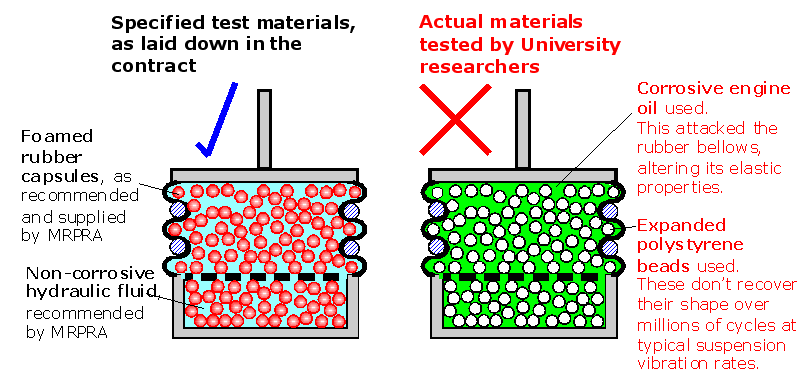
MRPRA = Malaysian Rubber Producers Research Association.
The deficiencies of the bad research remained hidden in the report, because the work was restricted to a single impact, instead of a long series of oscillating impacts, as experienced by car suspension units.
March 2004
Bill receives a tipoff that representatives of a local company LighTex Ltd, have met with Dr Oyadiji and made commercial enquiries, in the mistaken belief that he is the joint inventor of SALi Technology.
Bill contacts the company who confirm the tipoff.
Bill later discovers that two more Lancashire based companies have also been misled. He writes to the University Vice-Chancellor about the matter, but the V-C's response is evasive.
Four years later Bill submits this information to a Formal Enquiry Panel, but it is not referred to in their report.
January 2005
Bill appeals to his Member of Parliament for help. The MP asks the University to withhold its financial demands on Bill while he investigates.
The University responds by increasing its pressure on Bill. It employs the internationally respected (and very expansive) solicitors, Eversheds, to pursue Bill personally for the payment for the flawed CrashSALi research.
The employment of Eversheds acts as effective smokescreen, bringing the MPs attempts to deal with the University to a close.
Bill finds it hard to believe that Eversheds would wittingly become involved in intimidating and fraudulent behaviour. He tries to obtain copies of the correspondence between the University and Eversheds using the Freedom of Information Act.
The University refuses to release the documents, citing public interest immunity. Bill appeals to the Information Commission who respond that they are unable to force the University to reveal legal correspondence.
To this day, Bill does not know what creditworthiness damage this secret correspondence has done to him.
Further evidence of a cavalier attitude to the Freedom of Information Act
Bill was a Fellow of the University and had been appointed lead partner for the PedSALi project. In spite of this, the University correspondence with the EPSRC who funded the University research was withheld from him. He tries to obtain this information from the University using the FoI Act, but again he is foiled and it is withheld. [See Figure 4 on this linked page for details.]
Bill’s MP makes another attempt to solve the Manchester fraud problem
Bill’s MP asks Lord Sainsbury the (then) Minister for Science to intervene. He declines, arguing that it is up to Bill to sort the problems out. [To see the Sainsbury letter go to the CrashSALi page and scroll down to Appendix One. ]
Bill confronts a painful truth about his battle to expose fraud:
So many academics have been drawn into the Manchester SALi research cover-up, he can only uphold the good name of his invention at the risk of shaming British science.
Around this time his eyesight deteriorates rapidly and he is warned that he may go blind. Fortunately, the medical team who treat him at the Manchester Eye Hospital, a Manchester University teaching hospital are superb. He has to give up driving and cycling and struggles to read without electronic aids. But the highly skilled medical team manages to save a significant amount of his vision.
This traumatic experience has a surprisingly reassuring effect on Bill’s faith in humanity, science and Manchester University.
After his vision deteriorated he was knocked down while crossing a road. The fight for softer car bumpers becomes personal.
April 2005
Bill received a tipoff that public funds may have been used to disseminate false information about SALi Technology. Trips to Virginia Beach USA and San Diego, California have been made to present the fraudulent PedSALi research results. [The papers presented are listed as references 11, 12 and 13 below.]
2006
(i) Bill receives a tipoff that Dr Oyadiji is claiming first authorship of one of the SALi patent applications that Bill has written for the University. An online check of Dr Oyadiji's publications confirms this.
Bill writes a letter of complaint to the University Vice-Chancellor. His reply is evasive.
Dr Oyadiji is promoted around this time.
(ii) Since the 1960’s Bill has argued that it should be possible to significantly reduce power generating costs by building a new type of turbine that mimics hurricanes. He forms a small company to develop the concept with a chartered engineer, Dick West. They approach Manchester University, suggesting a research collaboration. Bill hopes that by working with the University on another project that attracts research funding, the penny will finally drop:
He is fighting research fraud at Manchester University because he believes in research integrity and wishes his local University well. Sadly this overture fails and the research is done at Lancaster University.
April 2008
Bill receives a phone call from a distressed undergraduate student at Manchester University. He claims that he has been set a SALi research project by his supervisor, Dr Oyadiji that defies the laws of conservation of energy. He asks for advice.
This project breaches Bill’s intellectual property rights and does indeed “defy” the law of conservation of energy.
Bill writes a letter of complaint to the University Registrar.
Professor Colin Bailey, the Dean of the Faculty of Engineering and Physical Sciences makes an anonymous reply. (His identity only emerged later.) This includes false evidence that Bill’s IP rights have not been violated. There is no reference to the student being set a physically impossible project.
[Click for details of this issue and to see a copy of Professor Bailey’s anonymous letter.]
September 2008 onwards
Undergraduate engineering students at Cardiff University begin a series of SALi Technology projects. Two students carry out impact tests on correctly packaged SALi beams, mimicking half size SALi filled car bumpers. Their results are far superior to the fraudulent PedSALi car bumper research at Manchester University. With Bill's agreement, a paper is presented at an international automobile engineering conference in Germany [4].
A third student carries out SALi filled car suspension unit tests. But unlike the fraudulent Manchester CrashSALi work, the correct type of oscillation tests are done and a valid formula of SALi is used. The results are in line with Bill's predictions.
Scroll down to Section Eight on this linked web page for details of the project.
The contrast between Manchester and Cardiff
Well supervised undergraduate students at Cardiff University, working on shoestring budgets, have produced better results in six months of work than badly supervised post- doctorate researchers in four man-years at Manchester University.
October 2008
The post amalgamation University of Manchester establishes an Institute for Science, Ethics and Innovation. Bill submits his evidence of fraud to the two leaders of the Institute, resulting in a formal enquiry being held.
It has taken four years and sixteen letters to the University to win a formal enquiry. Here is a list of them:
17 January 2004. To the Vice-Chancellor, Sir Martin Harris
16 February 2004. To the Vice-Chancellor, Sir Martin Harris
19 April 2004. To the Vice-Chancellor, Sir Martin Harris
30 June 2004. To the Vice-Chancellor, Sir Martin Harris
9 August 2004. To the Vice-Chancellor, Sir Martin Harris
19 August 2004. To the Vice-Chancellor, Sir Martin Harris
3 October 2006. To the Vice-Chancellor, Professor Alan Gilbert
7 March 2007 (i) To Professor Rod Coombs, Vice-President, Innovation and Economic Development
(ii) To Alan Carter, University Records Manager
17 March 2007 To Professor Rod Coombs, Vice-President, Innovation and Economic Development
31 May 2007. To University Registrar, Mr McMenemy
28 June 2007. To University Registrar, Mr McMenemy
3 April 2008. To University Registrar, Mr McMenemy
21 June 2008. To University Registrar, Mr McMenemy
25 October 2008
(i) To Professor Sulston, Chair of Institute for Science, Ethics & Innovation
(ii) To Professor Harris, Head of Institute for Science, Ethics & Innovation
July 2009
A student at Cardiff University discovers that SALi Technology is being investigated at Nanjing University, China, and that two papers have been published. These papers include a diagram from Bill's unpublished Degree thesis. Further investigations reveal that Dr Oyadiji has visited Nanjing and that he has collaborated in writing research papers with one of the Nanjing authors. This information is submitted to the Formal Enquiry Panel, but is not referred to in their Report. [For details see Section Two on the CrashSALi web page.]
August 2009
Sadly, the enquiry process itself becomes a corrupt farce. Here are some of the reasons why:
(i) There are three people whose behaviour should be investigated; Dr Oyadiji, Dr Turner and Professor Wright. But Dr Oyadiji is selected for investigation as a scapegoat, with Turner and Wright appearing as independent witnesses who can testify on his behalf.
(ii) Professor Reid and Dr Cooper, the witnesses that Bill recommended to the Vic-Chancellor are not called.
(iii) Bill gives permission for all of the University personnel involved to see his evidence, but there is no reciprocity. During the course of the formal investigation Bill does not receive a single document submitted by the University party.
(iv) Bill submits evidence of good SALi research being done at Nanjing and Cardiff Universities that highlight the Manchester research fraud. The Panel does not follow up this valid peer research.
This is particularly disturbing because repeatability of research by peers is the most fundamental research quality control tool.
(v) Bill is placed in an unfair position when he is invited to appear before the Panel. He is competing with secret evidence from “independent witnesses” who have a vested interest in protecting the scapegoat.
Given the huge number of documents involved and his partial sight problems he asks for an outline of the questions he is likely to be asked, so that he can get his documents in order.
The Panel refuse Bill’s request and he declines to appear because he fears that his unsubstantiated verbal statements will be twisted against him.
January 2010
After sixteen months, the Formal Enquiry Report is delivered. The scapegoat is cleared and the Formal Enquiry Panel grants Dr Oyadiji permission to continue and publish his SALi research. This is an over-reach of power because Bill owns the SALi intellectual property rights. [But the Panel's permission is sanctified by Professor Bailey’s anonymous letter.]
The Panel reprimands Bill for his “unprofessional” behaviour in seeking research advice from Professor Reid. They make recommendations to prevent future Research Fellows causing similar problems for the University.
The Report, which has been overseen by the Manchester University Research Integrity Office, contains many false and damaging statements about Bill’s professional behaviour. He spends three months assembling the evidence of Formal Enquiry fraud and submits this to The Information Commission, claiming that Manchester University is creating and holding false records about him.
The Commission refuses to examine the evidence explaining that the case is too complex for them to investigate.
Bill then submits all of his evidence of Formal Enquiry fraud to Professors Sulston and Harris who head the Manchester University Institute for Science, Ethics and Innovation. They duck the issue by passing the case on to the Research Integrity Office, where the Formal Enquiry fraud had originated.
The Research Integrity Office refuses to examine the evidence that its own staff had misbehaved on the grounds that it was not submitted within ten days of the report being sent to Bill.
March 2010
Dr Huw Davies who has supervised the highly professional SALi research at Cardiff University requests EPSRC funding to do the SALi core characteristics research correctly. His bid is rejected on the grounds that the research lacks novelty. It is not known if the anonymous EPSRC referees who rejected the Cardiff bid had any association with the earlier fraudulent Manchester work. Or, if the fraudulent Formal Enquiry Report had any influence on their decision.
August 2010
Bill becomes increasingly worried about the damage the fraudulent Report may be doing. He sends a detailed testimony of the misbehavior at Manchester University to all listed members of its Institute for Science, Ethics and Innovation. He hopes that he will be able to shame them into acting ethically.
Nobody responds.
July 2011
Fresh evidence relating to the fraud emerges so Bill submits a revised version of his testimony to the ‘Ethics Institute. This testimony bounces back from all the twenty Institute email addresses. He manages to get round this by changing his email identity to “SaveBritishScience”. This time all of the copies of the testimony appear to get through.
February 2013
(i) The Manchester University Research Integrity Office acknowledges that details of the financial, research and Formal Enquiry fraud have been published on this web site, but takes no remedial action.
(ii) A member of the public makes a Freedom of Information request for copies of the two testimonies, as sent to the Institute. The FoI request comes to nothing because the ‘Ethics Institute denies all knowledge of the testimony.
Bill supplies a copy of the second testimony to the member of the public who has been misled. He also sends copies to the University Vice Chancellor, Professor Helen Gleeson, Professor Peter Duck, the Manchester University Research Integrity Office, the University Records Office and all listed members of the Institute for Science, Ethics and Innovation.
Again, nobody responds
May 2013
The EPSRC is informed that details of the financial, research and Formal Enquiry Panel fraud have been published online. Tracey Moulsley, the EPSRC Corporate Information Manager acknowledges receipt. But she does not respond to Bill's request for the EPSRC to investigate the evidence.
Twenty nine years after inventing SALi Technology, Bill Courtney is left £140,000 worse off, in poorer health and his good professional name has been tarnished.
£250,000 of public funds for SALi research has been squandered by Manchester University. In contrast, Dr Huw Davies and his students at Cardiff University, who have acted in a highly professional manner have been denied public funding.
But the real losers may be some of the victims of car crashes and other impact accidents who have been denied the benefits of SALi Technology.
This history is more of a Greek tragedy than a tale of British research corruption. Each person who intervened probably started off gently bending the truth in the belief that this would protect the good name of British science and Manchester University in particular. Unfortunately, having made their slightly bent contribution and discovering that Bill Courtney was not going to concede defeat, they had to bend the truth ever more to protect their own professional names.
Initially Professor Wright loyally protected Dr Oyadiji. And then Dr Turner dropped his brief of independence to protect Professor Wright and Dr Oyadiji. And then senior management tried to use Eversheds solicitors to protect Oyadiji, Wright and Turner.
With the passage of time over the years, more basically decent Manchester University academics have been drawn in and their careers placed under threat.
By the time Bill went public and started appealing for outside intervention, the fraud had become too hot for anyone to touch. Fraud creep had set in.
When Courtney complained that the fraud was hampering the development of his green energy inventions, the sunken cost of exposing the fraud for the establishment only increased. Only time will tell if the fight against global warming has suffered as a consequence.
Those who have turned a deaf ear include the following:
t the University Registrar, t Manchester University Research Integrity Office, t Manchester University Institute for Science, Ethics and Innovation, t successive Vice-Chancellors, t the Manchester University senate, t the Government Minister for Science, t the EPSRC, t Universities UK, t The UK Research Integrity Office, t the trustees of the UKRIO t The UK Parliament Science & Technology Committee, t Trade & Industry Committee t The Department for Business, Innovation & Skills t The Charity Commission, t The Royal Society, t The Campaign for Science and Engineering t Sense about Science t The Council for the Defence of British Universities t the UK science media t Leeds University. t Science & Technology Committee Inquiry into graphene
Its not just Bill’s SALi and green energy inventions that have suffered during the long wasted years. Stress related health problems plus his financial difficulties mean that virtually all of his inventions described on this website have been adversely affected.
Bill remains committed to playing his part in rebuilding Britain as a modern science based economy. He offers a number of suggestions incorporating what he has learned from hi dealings with Manchester University on the following web pages:
Bill believes that compared with the size of our population, British universities are the best in the world. But we are at grave risk of losing this status if we rank academic protectionism higher than research integrity.
See Section 10 on this linked webpage for our proposal for countering the protectionism of British science.
References
1 Courtney, W. A. Preliminary investigations into the mechanical properties and potential applications of a novel shock absorbing liquid, MPhil Thesis, Manchester School of Engineering, University of Manchester (1998).
2 Courtney W A and Oyadiji S O (2001). Preliminary investigations into the mechanical properties of a novel shock absorbing elastomeric composite. Journal of Materials Processing Technology 119 (2001) 379-386.
3 Courtney W A and Oyadiji S O (2000). Characteristics and potential applications of a novel shock absorbing elastomeric composite for enhanced crashworthiness. International Journal of Crashworthiness 5:4 (2000) 469-490.
4 Huw Davies et. al., Cardiff University School of Engineering, Pedestrian Protection using a Shock Absorbing Liquid (SALi) based Bumper System, ESV Conference, Stuttgart, June 2009, Paper Number 09-002.
5 H. d. Teng, Q. Chen, Study on vibration isolation properties of solid and liquid mixture, Journal of Sound and Vibration, (2009) doi.10.1016/j.jsv.2009.04.036
6 Courtney, W .A. Device incorporating elastic fluids and viscous damping, World Intellectual Property Organisation, WO 97/25551 (1997).
Subsequently granted as GB2324352.
7 Courtney, W. A. Improved impact absorber with viscous damping, World Intellectual Property Organisation, PCT/GB98/03594 (1998).
Subsequently granted in the UK, Germany and France as EP (UK) 1068460.
8 Courtney, W. A. Impact absorbent building structures, British Intellectual Property Office GB9805887.8 (1998).
Subsequently granted as GB2335447.
9 Courtney, W. A. Impact energy absorbing device incorporating bunching capsules British Intellectual Property Office, GB0907996 3 (2009).
Subsequently granted as GB2470180.
10 Courtney, W.A. Improved vibration isolator, British Intellectual Property Office GB0915807.2 (2009).
11 S O. Oyadiji et. al., University of Manchester, Core property characterization for a shock absorbing composite, SAVIAC 75th Symposium, 17-22 October 2004.
12 S O. Oyadiji et. al., University of Manchester, Characteristics of deformable cylindrical beams filled with a shock absorbing composite, SAVIAC 75th Symposium, 17-22 October 2004
13 G. Georgiades et. al., Impact response of flexible cylindrical tubes filled with a shock absorbing composite, University of Manchester, SPIE Conference 7-10 March 2005.
14 G. Georgiades et. al., University of Manchester, Characterization of the Core Properties of a Shock Absorbing Composite, Journal of Engineering Materials and Technology, ASME, October 2007, Vol. 129, pages 497-504.
15 Leroy, V, Applied Physics Letters volume 95, p 17.
16 Cartwright, J, New Scientist, 26 February 2011, p 45.
===========================================
18 W. A. Courtney and S. O. Oyadiji, University of Manchester, A Novel shock absorbing solid-liquid Composite with potential for automobile engineering applications, 1: Basic concepts and properties of SALi, Journal of Automotive Engineering. Courtney handed this paper to Oyadiji for final checking in July 2000, but it was not taken forward to publication.
19 W. A. Courtney and S. O. Oyadiji, University of Manchester, A Novel shock absorbing solid-liquid Composite with potential for automobile engineering applications, 2: Variable stiffness car bumpers, Journal of Automotive Engineering. Courtney handed this paper to Oyadiji for final checking in January 2002, but it was not taken forward to publication.
Failure to publish papers 18 and 19.
In February 2002, Courtney complained in writing to Professor Wood, the head of the engineering department about Dr Oyadiji’s actions in blocking the publication of these papers. He requested an interview to discuss this obstruction and other matters. But his request was ignored.
20 Courtney W, Oyadiji S O. A Novel Impact Absorbing Device Based on a Shock Absorbing Liquid. Journal of Materials Processing Technology. This is a ghost paper.
Courtney handed the paper to Oyadiji for final checking and submission, 8th April 2002. According to the Manchester University web site (2007) The paper was “In press.” But when Courtney checked with the publisher, Elsevier, they could find no evidence of this paper being submitted.
Q. Would Bill Courtney be willing to work with Manchester University at a future date?
A. Bill describes himself as “a proud Manchester Man.”
The vast majority of staff at the University had nothing to do with the SALi research fraud. Their professional conduct should not be judged by any of the evidence presented on this website. In order to demonstrate his belief in this statement, Bill would be happy and willing to work with the University developing any of his inventions.
BUT
(i) He does not tolerate research fraud and believes that the fraud problems described on this website need to be openly and fully investigated by a totally independent third party.
(ii) Lessons need to be learned. As part of his contribution to this process he makes a number of proposals on the following web pages Science under attack and Innovation "apps"
(iii) Fair compensation needs to be paid by the University for the distress and loss of commercial opportunities caused by the cover-up of the SALi research fraud.
